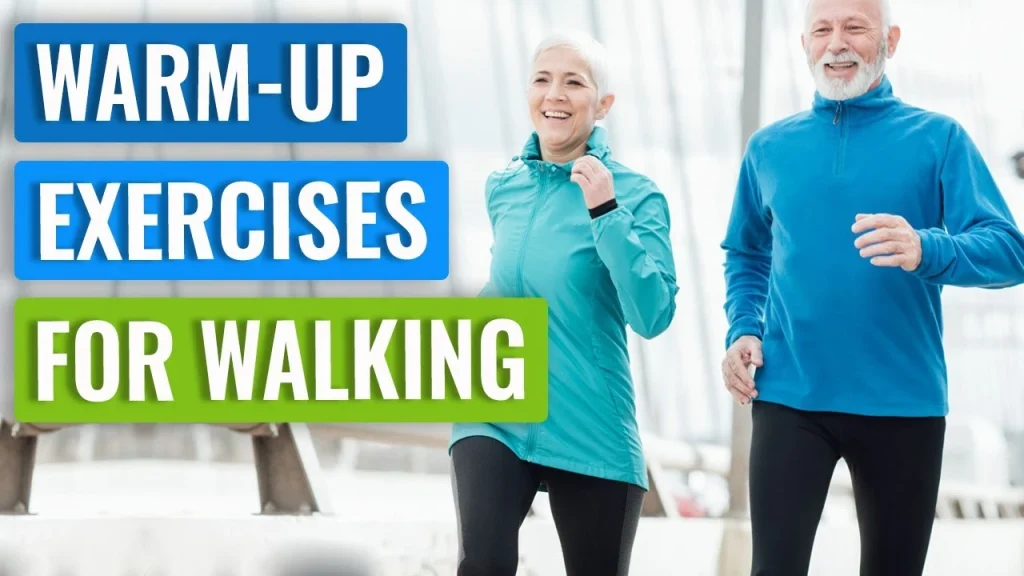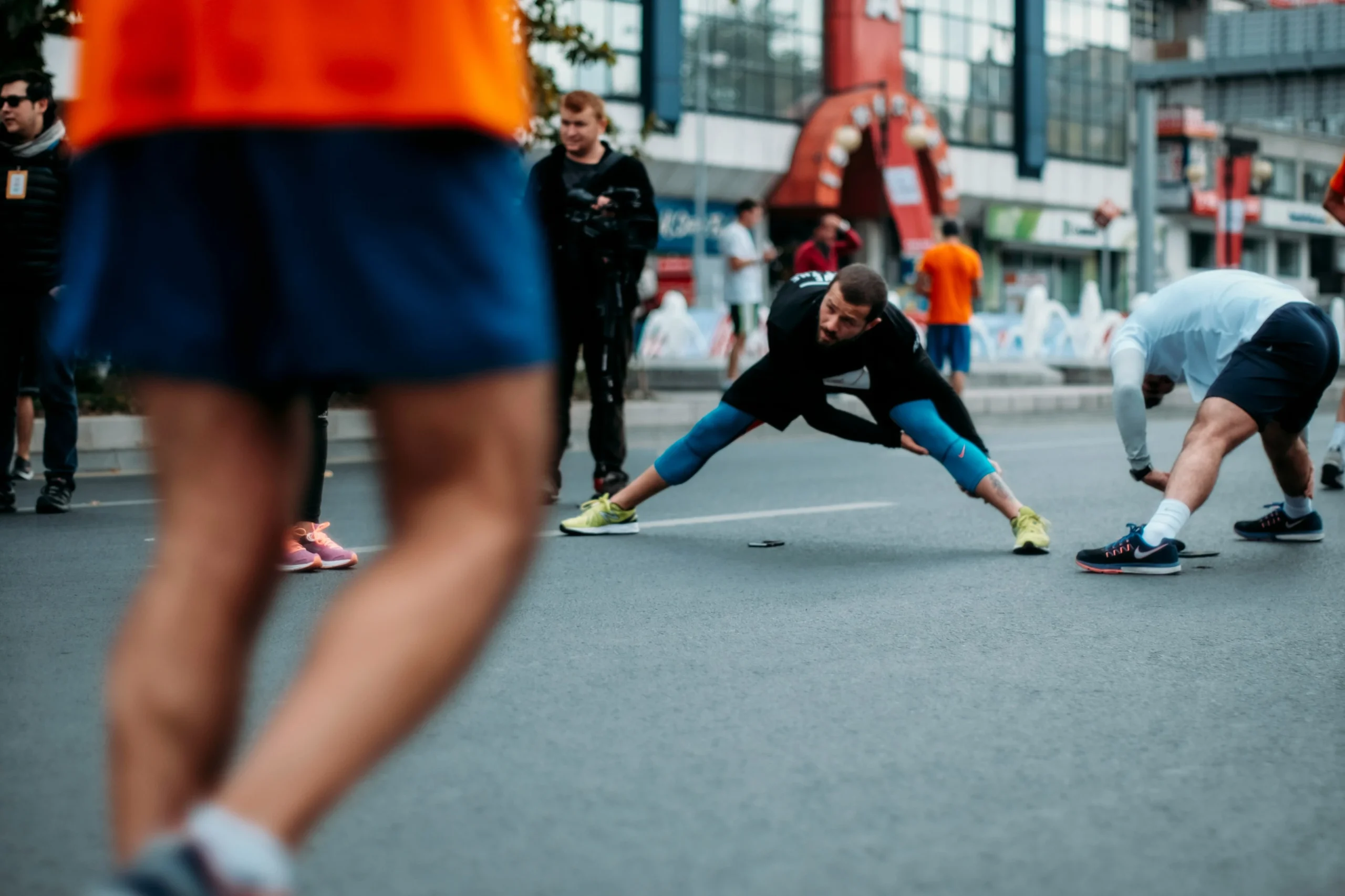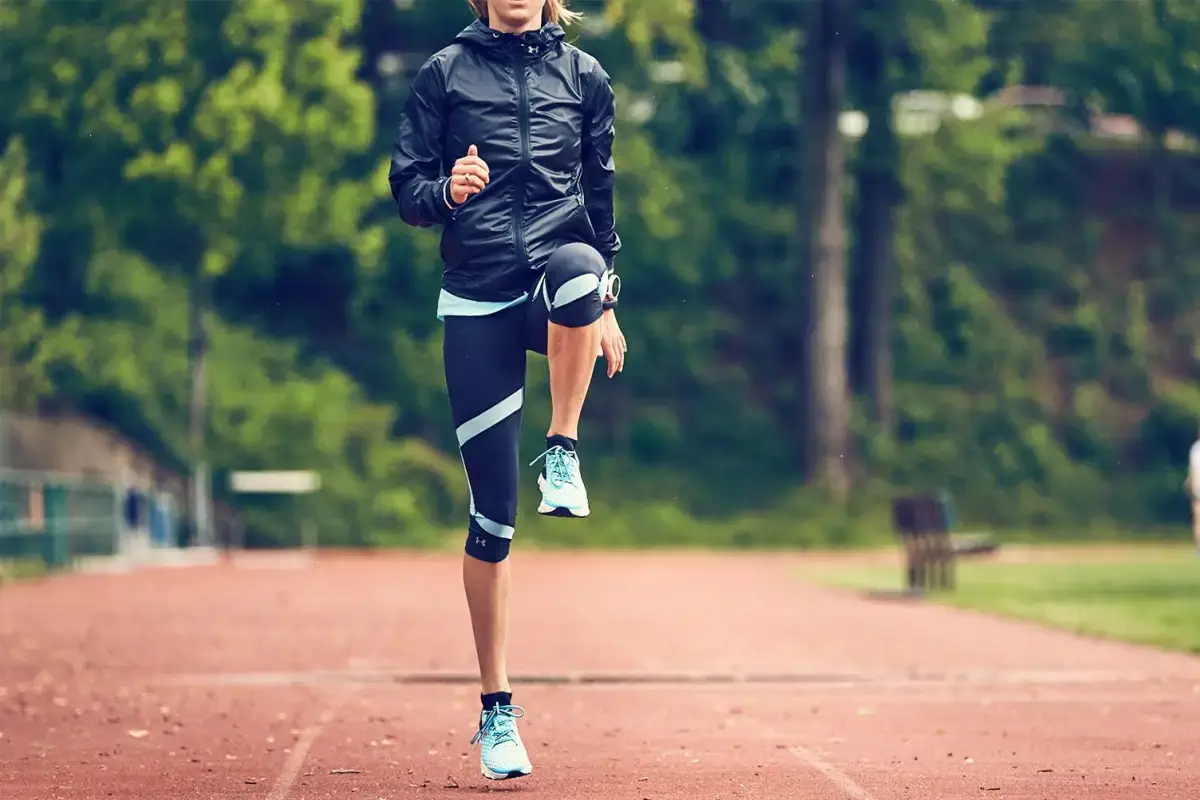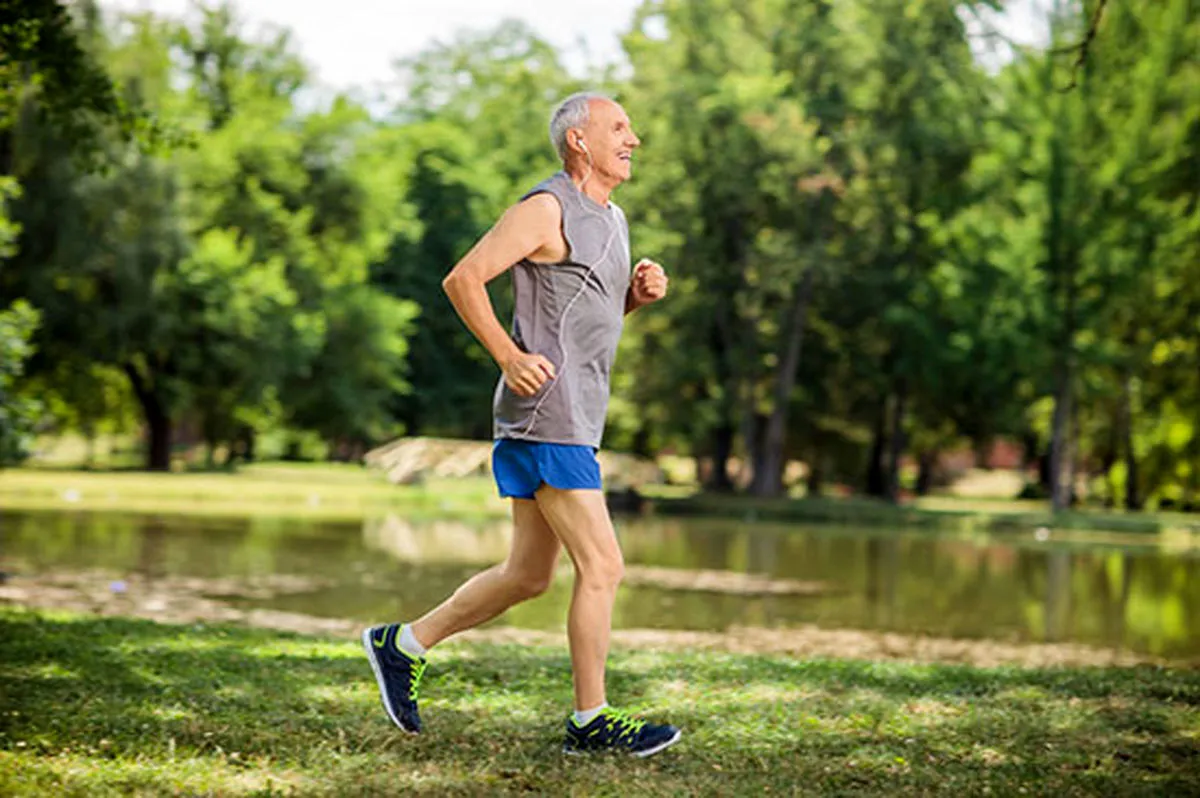
Best Warm-Up Exercises for Seniors Before Walking
In general, warm-up exercises for seniors before walking are very important. In fact, before doing any exercise, seniors should warm up their bodies for 5 minutes. Warm-up exercises include simple stretching exercises that should be performed in a way that does not lead to shortness of breath. If an elderly person has not exercised before, it is better to start exercising slowly and slowly, and most of the exercises should be those that are easier to do.
This will cause less damage to themselves and prevent muscle and joint pain at the beginning. Before walking, you can do the exercises that we will explain below for a few minutes. To get acquainted with these exercises, stay with us until the end of this Human Health Mag article.
The Importance of Warming Up Before Exercise
It is very important to do warm-up exercises for seniors before walking. Before you start running on the treadmill or in your local park, you should definitely warm up. Although warming up before exercise adds a few minutes to your workout routine, you should consider it as an essential part of your workout. The importance of this is that it reduces tension and stress on your heart and other muscles. In general, warming up before exercise (and cooling down) involves performing exercise at a slower pace and intensity. You can do dynamic and static stretching exercises before walking and any other exercise to warm up and prepare your body for exercise.
Warming up before exercise helps prepare the body for aerobic activity. This means reducing the chance of injury during exercise. Studies show that increasing body temperature during the warm-up increases the sensitivity of nerve receptors as well as the speed of nerve impulses. In other words, it prepares your entire body—mind, muscles, nerves—so you can perform at your best during your workout. In addition to all of this, a good warm-up and workout can also improve your mental health. In general, warming up before exercise increases your calmness and focus.
Benefits of Warm-up Exercises for Seniors Before Walking
You may also be wondering how warm-up exercises for seniors before walking help your body’s safety and health? What happens in the warm-up process is that your cardiovascular system gradually improves by increasing your body temperature and increasing blood flow to your muscles. The gradual increase in body temperature and blood flow is the important factor that prevents shock to the heart and muscles. You can do stretching and proper warm-up movements before doing exercise for seniors over 75.

Warming up before exercise can also help reduce muscle soreness and reduce the risk of injury to various organs. This process activates and strengthens the connection between the nerves and muscles. As a result, it improves the efficiency of exercise movements. In addition, warming up before exercise also increases range of motion (flexibility).
Warm-Up Principles Before Starting Your Workout
Just before you start your walk, you should do warm-up exercises for seniors before walking. The general rule is to start by focusing on large muscle groups, such as the hamstrings. After this point, you can do movements specific to your sport or activity, if necessary.
Start the movement patterns you choose for your workout at a slow and steady pace. Then gradually increase their speed and intensity. This is called a “dynamic warm-up.” Warming up may cause you to sweat a little, but it generally does not tire you out. Warming up before exercise can include light aerobic activity and some stretching appropriate to the activity you plan to do. In general, a warm-up before walking or any other exercise usually includes:
- Brisk walking
- Stepping up and down stairs
- Stepping sideways
- Running in place
- Arm rotations
- Lunges
Warm-Up Exercises for Seniors Before Walking
Warm-up exercises for seniors before walking take about 10 minutes. This number is not always fixed and can vary depending on the type and intensity of the workout. For example, if you are going to do a jog, a “slow jog,” which is considered a low-intensity exercise, may be appropriate. If you are doing strength training such as weightlifting or Pilates, you can start with a butterfly movement to increase blood flow to your muscles.

A low-intensity warm-up includes pedaling a stationary bike, doing some stretching, or even some yoga poses. Here are some examples of activities to consider in the warm-up process before various workouts:
- To warm up before a brisk walk, walk slowly for 5 to 10 minutes.
- To warm up before a run, walk briskly for 5 to 10 minutes.
- To warm up before swimming, swim slowly at first and then increase the speed as much as you can.
Common Mistakes in Warming Up
As we said, warm-up exercises for seniors before walking and before any other exercise are very important. Sports injuries can occur for various reasons. One of the most common reasons for injuries in sports training is ignoring the warm-up exercise before exercise. Not being properly prepared for exercise can lead to joint wear and tear or muscle pain. According to the American Heart Association, if warm-up and cool-down before and after exercise are done correctly, it helps reduce the risk of injury and improve performance and exercise results.
But even though warming up before exercise takes no more than a few minutes, many people are used to ignoring this essential step before exercise. In the following section, we will discuss some common mistakes about warming up before exercise so that you can have a more effective and quality workout by recognizing them.
- Skipping the warm-up before your walk: It’s tempting to avoid a warm-up, especially when you’re pressed for time. But experts now say that skipping a warm-up can do more harm than good. A short warm-up is better than skipping it altogether. But it should be appropriate for the sport or activity you’re doing, and the intensity should be enough to prepare your body for the main workout.
- Warming up with the intensity of your main workout: Your warm-up should be similar to your main workout, but much lighter and gentler. This is the dynamic warm-up we mentioned earlier. In a dynamic warm-up, your body warms up, not at full capacity, but with movements that are similar to the movements of your main workout. When you do dynamic movements before your workout, you increase your oxygen consumption, blood flow, and body temperature before you jump right into the action.

- Stretching Before Warming Up: This one is especially important on the list of the most common warm-up mistakes before exercise. It seems like a no-brainer to start your warm-up with stretching, and over the years, many people have done just that. But the reality is different. Stretching is actually recommended to increase flexibility after a workout (cool-down). Static stretching (which means holding a stretch for 30 seconds or more, as opposed to dynamic stretching) improves flexibility, increases range of motion, and can help increase blood flow and oxygen distribution throughout the body, but it’s not recommended for warm-ups.
- Not warming up enough: For many people, a warm-up is defined as two minutes on the treadmill and that’s it! According to the National Association of Sports Sciences (USA), an effective warm-up should last between 5 and 10 minutes and include low- to moderate-intensity cardio-respiratory exercises that are followed by movements similar to the main exercise, but at a lower intensity. The length of the warm-up is usually determined by several factors, such as the duration and intensity of the activity.
- The same warm-up for different exercises: A warm-up that is appropriate for the type of exercise that is going to be performed will better prepare the body for the exercise. The warm-up can be considered a very intensive version of the main exercise, as it prepares the mind and body for what is going to be done.
Tips for Warm-Up Exercises for Seniors Before Walking
Doing warm-up exercises for seniors before walking helps gradually increase your heart rate, improve blood flow and muscle activation, and increase overall performance. Warm-up exercises often enhance blood circulation and oxygenation, improve muscle efficiency, and improve endurance and strength. They also prevent sudden cardiovascular events that can occur when you suddenly start aerobic exercise.
The main benefit of warming up is injury prevention, as it increases body temperature, hardens muscles, and reduces the risk of tearing and spraining during exercise. In addition, proper stretching releases endorphins, which reduce stress and promote relaxation. This helps you stay focused on your exercise and reduces anxiety. It also helps you increase your motivation and improve overall performance.
Note that depending on the exercise program, a person can warm up in a variety of ways, including stretching, jogging in place, knee raises, shoulder rotations, knee bends. You can also do jumping, spinning, and similar movements. It is important to pay attention to your body’s ability and capacity and not overdo it with stretching, as this can affect your main workout.
Concluding Remarks
The goal of warm-up exercises for seniors before walking, and any other type of exercise, is to prepare your body and mind for your chosen activity. Warming up before exercise increases your heart rate and blood flow. This allows more oxygen to reach your muscles. Finding the right time to do regular aerobic exercise while still doing a proper warm-up and cool-down can be a challenge. But with a little creativity, you can incorporate it into your workout routine. For example, you could jog to the gym and walk home from the gym. Using a treadmill or stationary bike is another option that you should consider.
Also, remember that warming up is not an optional part, but an important part of your workout. Having the right equipment can make the process more enjoyable and effective. We hope this article will be useful for your future workouts. Please leave us a comment below and tell us about your experience with warming up before exercise.

Frequently Asked Questions
Why Warm Up Before Exercise?
In general, a warm-up involves performing physical activity at a slower pace and intensity. Warming up before exercise helps prepare the body for aerobic activity and reduces the risk of injury. Warming up before exercise also prevents tension and stress on the heart and other muscles, prepares your entire body for better performance, and increases your relaxation and focus.
What Are the Benefits of Warming Up Before Exercise?
Warming up strengthens the cardiovascular system. It also reduces muscle soreness and the risk of injury to various organs, improves the efficiency of exercise movements, and increases range of motion (flexibility).
How Long Should We Warm Up?
Warming up before exercise takes about 10 minutes. This number is not always constant and can change depending on the type and intensity of exercise.
What Are the Principles of Warming Up Before Exercise?
Warming up should be done right before you exercise. Start by focusing on the large muscle groups, such as the hamstrings. Then do the movements specific to your sport or activity. Start at a slow, steady pace. Then gradually increase the speed and intensity. Warming up for exercise can include light aerobic activity and some stretching appropriate to the activity you plan to do.
